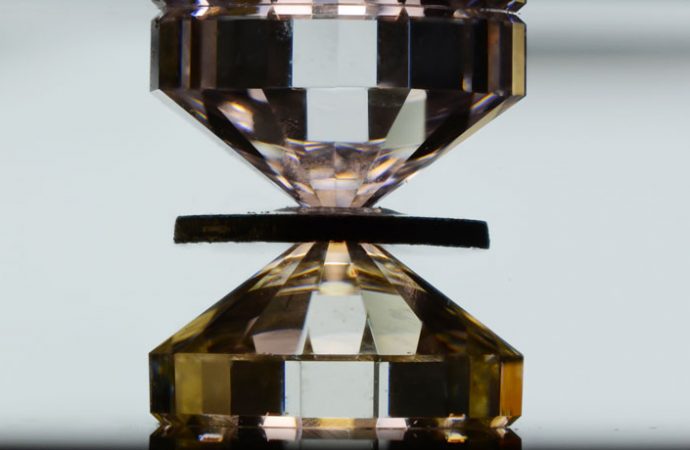If correct, the study would complete a decades-long quest to find the elusive material
Source: Science News
Physicists are crushing it — hydrogen, that is. Squeezing the chemical element to extremely high pressure transforms it into a metal, a trio of researchers claims.
The purported metallic hydrogen appeared at a pressure more than 4 million times that of Earth’s atmosphere, the scientists report June 13 at arXiv.org. If confirmed, the achievement would fulfill a long-standing quest to produce the elusive metal, first predicted in the 1930s to exist.
The work has yet to undergo peer review. But it is “definitely a very substantial step ahead” of previous research, says physicist Alexander Goncharov of the Carnegie Institution for Science in Washington, D.C., who was not involved with the study. “I think it’s quite conclusive it is metallic.”
Other researchers are more skeptical. Physicist Eugene Gregoryanz of the University of Edinburgh says that he does not find the new experiment convincing, and notes that many previous claims of metallic hydrogen have been proven wrong in the end.
Some aspects of the result disagree with previously published measurements of hydrogen at high pressure, says physicist Isaac Silvera of Harvard University. In 2017, he and his colleagues reported spotting hydrogen turning into a metal, a claim that was criticized by other scientists, including Gregoryanz.
Physicist Paul Loubeyre of the French Alternative Energies and Atomic Energy Commission in Arpajon, a coauthor of the new study, did not respond to requests for comment for this article.
Metallic hydrogen is particularly enticing to physicists because of predictions that it may be a superconductor, a material that allows electricity to flow without resistance. But unlike other known superconductors, which must be chilled to very low temperatures, metallic hydrogen might be a superconductor at room temperature. Scientists’ eventual goal is to find a superconductor that requires neither cooling nor high pressure. If such materials are found, they could be integrated into electronics and save vast amounts of energy.
To create the purported metal, Loubeyre and colleagues squeezed hydrogen gas between two diamonds. An improved setup, with diamonds etched with a doughnut shape, allowed the researchers to reach higher pressures than previous experiments.
Using a powerful source of light called a synchrotron, the team sent infrared light through the diamonds and the squeezed hydrogen. As the physicists ratcheted up the pressure, the hydrogen suddenly became opaque to the light, a sign of a transition to a metal.
“It’s the best experimental data to date on hydrogen in this pressure range,” says physicist Russell Hemley of the University of Illinois at Chicago. The behavior of hydrogen at high pressures is complex, taking on a variety of different phases depending on the conditions, as molecules and atoms rearrange under the squeeze. For example, there may be semimetallic phases as well as a true metal.
It’s unclear what the properties of the claimed metal are, such as whether it is superconducting. But the new result adds to the complexities of hydrogen that scientists have already uncovered, Hemley says. “It’s part of this developing story about the nature of hydrogen at high pressure.”

































Leave a Comment
You must be logged in to post a comment.